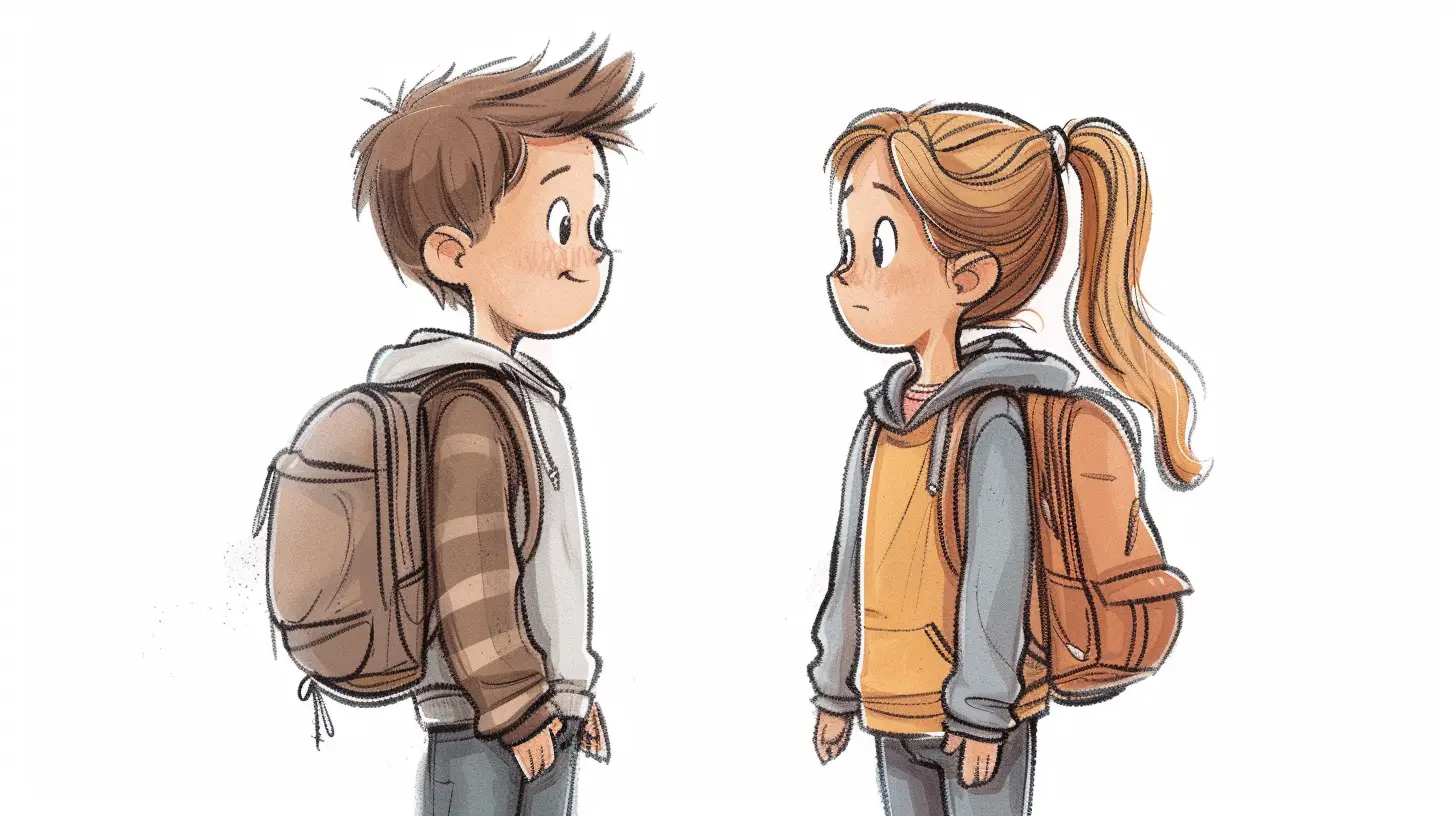How to Use Role-Playing in the Classroom to Build Empathy
17 November 2025
Alright, grab your imaginary swords and dust off that invisible crown—because today, we’re diving into the wonderfully weird (and wildly effective) world of role-playing in the classroom!
And no, I’m not talking about Dungeons & Dragons—though if your students want to slay dragons while learning emotional intelligence, who are we to stop them?
Welcome to the eccentric, often hilarious, and surprisingly touching universe of role-playing (RP) in education—where empathy blooms, critical thinking sharpens, and students actually want to participate. Yes, you read that right.
So, how does pretending to be someone else actually help students understand others better? And how can you, a mere mortal teacher armed with whiteboard markers and caffeine, harness this method without losing your mind?
Let’s break it down, one theatrical flourish at a time.
Wait, What Even Is Role-Playing?
Role-playing is basically acting—but without the annoying rehearsal schedules, stage lights, or Tony Awards. It’s when students temporarily “become” someone else. They step into another person's shoes (hopefully not their actual smelly sneakers) and view the world through a completely different lens.In classrooms, that might mean simulating a historical debate, reenacting a social dilemma, or embodying a character with a wildly different perspective. It's a mix of performance, pretend, and meaningful discussion—all with an educational goal in mind.
Think “Mr. Rogers meets Broadway,” but with more worksheets.
Empathy: The Unicorn Skill Everyone Talks About
Empathy. That mystical, wishful unicorn we all wish our students had more of. It’s the ability to understand and feel what others feel. Not just nod and look semi-interested, but to get it. As in, “Oh wow, I see why you felt that way. That must’ve been hard."Teaching empathy is tricky. You can’t just assign a worksheet and hope for the best. You can’t force feelings with a PowerPoint. But what you can do is invite students to feel by being someone else for a while. That's where role-playing becomes your secret weapon.
Top Benefits of Role-Playing in the Classroom (Spoiler: It’s More Than Just Fun)
Yeah, it’s fun. But role-playing isn’t just a classroom distraction disguised as a lesson. It’s legit professional development for kids. Here’s why:1. Emotional Literacy 101 🎭
When students pretend to be someone from a different background, they confront thoughts, beliefs, and emotions that aren’t their own. This helps them name feelings—both theirs and others’.It’s like emotional vocabulary-building... with costumes.
2. Perspective-Taking (A.K.A. “Whoa, I Never Thought of It That Way”)
You know that moment when a student realizes that someone else’s experience is totally different from theirs? That’s gold. Role-playing regularly delivers those “aha” empathy moments.3. Social Skills Upgrade: Now With Extra Listening!
Role-playing requires active listening, cooperation, and teamwork. Translation? Students actually have to stop talking about TikTok for five seconds and pay attention to their peers. Small miracles.4. Conflict Resolution Superpowers
If students can role-play conflict scenarios—like bullying, peer pressure, or awkward group work—they start to see solutions before things escalate in real life. So yes, role-playing might even save your sanity.
How to Use Role-Playing Without It Turning Into Total Chaos
Now, before you bring in a full costume closet and pretend your classroom is a Hollywood soundstage—let’s talk strategy. Role-playing can be magic, but only if you set it up right.1. Start Small (As In, Baby Steps, Friends)
Don’t throw your students into a full-blown historical reenactment of the French Revolution on Day One. Start with 5-minute warm-up scenarios. Let them get used to the idea of “playing” someone else.Try a simple question like:
“Pretend you're the school janitor. How would you feel if someone left trash all over the floor?”
Boom. Role-play, empathy, classroom management—three birds, one dramatic rock.
2. Choose Scenarios That Actually Matter
Yes, pretending to be a unicorn queen from Mars is fun, but maybe not entirely relevant. Focus on situations connected to your lesson goals:- Social studies? Simulate real-world conflicts or debates.
- Literature? Explore character motivations with a scene.
- Health or SEL? Dive into peer pressure, anxiety, or friendship issues.
Make it real enough to matter, but safe enough so nobody feels personally attacked.
3. Give Roles—Not Scripts
There’s a huge difference between “Here’s a script, memorize it” and “Here’s who you are—act and react like they would.” You want that second one. Encourage improvisation. That’s where empathy sneaks in through the back door.And honestly, giving 13-year-olds a chance to improvise? It’s like unleashing dramatic geniuses who’ve waited their whole lives for this moment.
4. Hit Pause and Reflect
If you just run the role-play and carry on with your day, congrats—you just hosted Theater Hour. To make it stick, stop and reflect. Ask:- How did your character feel?
- What did you learn about them?
- Was it hard to see things their way?
- How would you handle that situation now?
That’s where the real magic is. Not in the acting—but in the debrief.
5. Set Ground Rules (Or Risk Total Anarchy)
Role-play can get way too real if you’re not careful. Kids will go full Oscar-winner if given the chance. So be clear:- Be respectful—no mocking or going off the rails.
- Stay in character—this isn’t open mic night.
- No trying to “win” the role-play—it’s not a competition.
The goal isn’t who’s funniest. It’s who felt the most.
Real-Life Classroom Role-Play Ideas to Build Empathy That Won’t Bore Your Students to Death
Okay, okay—you’re sold. But what does this look like in actual classroom life (a.k.a. controlled chaos)? Here are some ready-to-go ideas that you can totally steal. I won’t tell anyone.1. “A Day in the Life of…”
Have kids role-play a day in the life of someone from history, literature, or even the lunch staff. Let them walk through a normal school day as that person—and reflect on how it felt.Example:
“What would Martin Luther King Jr. think about your school’s social dynamics?”
2. “Hot Seat” Interviews
One student gets into character. The rest of the class interviews them like a journalist or podcast host. Great for deep-diving into characters, historical figures, or people with different life experiences.Warning: They may get really into it. Applaud accordingly.
3. Conflict Corners
Students role-play both sides of a conflict. Then, switch roles and do it again. This double-whammy forces them to understand both perspectives—bonus empathy points unlocked!4. Future You vs Present You
Ask students to role-play their future selves advising their current selves on how to handle stress, relationships, or school drama. It’s part empathy, part therapy, and 100% brilliant.5. Empathy Court
Put a fictional character or historical figure “on trial.” Assign lawyers, judge, jury, and witnesses. Let students research and represent different viewpoints. It’s like Law & Order: Classroom Unit—and it’s a blast.Common “But What If?” Teacher Fears About Role-Playing (And Why You Should Chill)
Let’s address the elephant in the room—teacher anxiety is real. You might be thinking:💬 “What if it gets out of hand?”
💬 “What if they don’t take it seriously?”
💬 “What if someone feels uncomfortable?”
Totally valid. But here’s the deal: you’re the director. You set the tone. You choose the scenarios. You have veto power. It’s like being the Kevin Feige of your own little Marvel Cinematic Universe—except with less CGI and more awkward adolescents.
Empathy-building isn’t perfect or polished. It’s messy, emotional, and sometimes unexpectedly hilarious. And that’s okay. Honestly, it’s better that way.
Wrapping It Up: The Funniest, Deepest, Most Unexpected Way to Teach Empathy
Sure, you could lecture about compassion. You could show a tear-jerking video montage of kindness. (No shade, those do work.)But role-playing? That’s next-level. It’s teachable empathy—felt, lived, acted out. It’s a low-cost, high-impact educational hack that creates authentic connections, builds emotional intelligence, and (bonus!) keeps kids engaged enough to forget you’re technically still “doing school.”
So, go ahead. Print out those character cards. Cue the imaginary soundtrack. Let your classroom become the stage where empathy takes center stage—one semi-cringey dramatic performance at a time.
Did someone just win an imaginary Oscar for “Most Emotionally Aware Interpretation of a Recess Argument?”
Yes. Yes, they did.
all images in this post were generated using AI tools
Category:
Classroom ActivitiesAuthor:

Madeleine Newton

